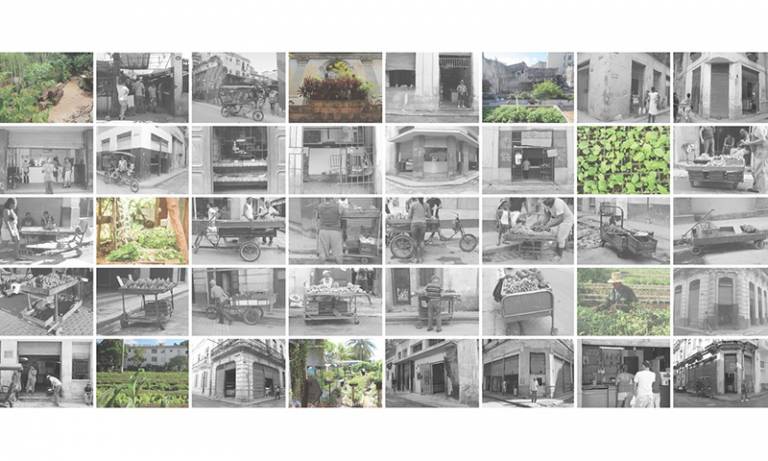PhD Research Conversations – Susan Fitzgerald
24 January 2017, 4:00 pm–6:00 pm

Event Information
Open to
- All
Availability
- Yes
Organiser
-
The Bartlett School of Architecture
Location
-
Room 1.02, 22 Gordon Street, London WC1H 0QB
Join current Bartlett School of Architecture PhD candidates as they present their work in progress.
Productive Urban Landscapes: Everyday Rhythms Surrounding Sites of Urban Agriculture in Havana, Cuba.
Susan Fitzgerald
(MPhil/PhD Architectural Design)
Designing stasis, the generative space of confrontation between kindred elements.
Upgrade Presentation
Principal supervisor: Peter Bishop
Subsidiary supervisor: Iain Borden
Sites of urban food production in Havana, Cuba, are an adaptable and accessible land resource for supporting food security. They are also part of everyday urban complexity involving the social, spatial and temporal. Hard to describe when viewed from above it is important to get closer to these sites to understand how they are made and re-made and whether there are lessons within them for this transitioning city.
If things don’t change, Havana will collapse. And if things do change, they’ll tear it down. Gerardo Mosqura
Henri Lefebvre made the powerful supposition that cultures dynamically produce space over time, which in turn shapes society. He started to develop rhythmanalysis as a tool to understand this relationship providing a useful methodology to study this assertion at sites of urban agriculture. Rhythmanalysis captures the everyday, heterogeneous, and evolving urban narratives of a city, making it an important orientation to participate in and interrogate these sites to challenge how they could be (re)imagined within a transitioning Havana. Focusing on cultivation sites in different urban contexts and municipalities: La Habana Vieja, Centro Habana and Plaza de la Revolución this thesis studies how social, ecological, and spatial rhythms are entwined to create the oeuvre of everyday urban life. It focuses on beats particular to city life in Havana: the quotidian, the seasonal, the slow decay of infrastructure, the sudden collapse of buildings, and the resourcefulness of everyday invention within the prevailing milieu of scarcity and documents the ways in which the urban everyday is continually reproduced and transformative to this evolving city.
Since the Sixth Communist Party Congress in spring 2011, reforms have been made by the government legalizing house sales and expanding self-employment, incrementally moving Cuba towards a more free-market economy, bringing into question the continuing ability to socially control capital. Meetings and announcements by the presidents of Cuba and the U.S. to ‘normalize bilateral relations’; the reinstatement of embassies in Havana and Washington after over fifty years of hostilities; the death of Fidel Castro; and the upcoming change in U.S. presidency all suggest profound transition within Cuba. Focusing on case study sites in various urban contexts, rhythmanalysis is used to listen while drawing is used to record, as both an analytical and illustrative tool, the evolving socio-spatial practices of these sites. These, in turn, are used to predict future rhythms within this changing city to ‘intervene in the everyday’ not to ‘change life’ but to accomplish ‘a tiny part of the revolutionary transformation of the world’.
Jill Hamberg, "Cuba Opens to Private Housing but Preserves Housing Rights," Race, Poverty & the Environment 19, no. 1 (2012): 71-74., page 74
Henri Lefebvre, Rhythmanalysis : Space, Time and Everyday Life (London: London : Continuum, 2004)., page 26
 Close
Close

